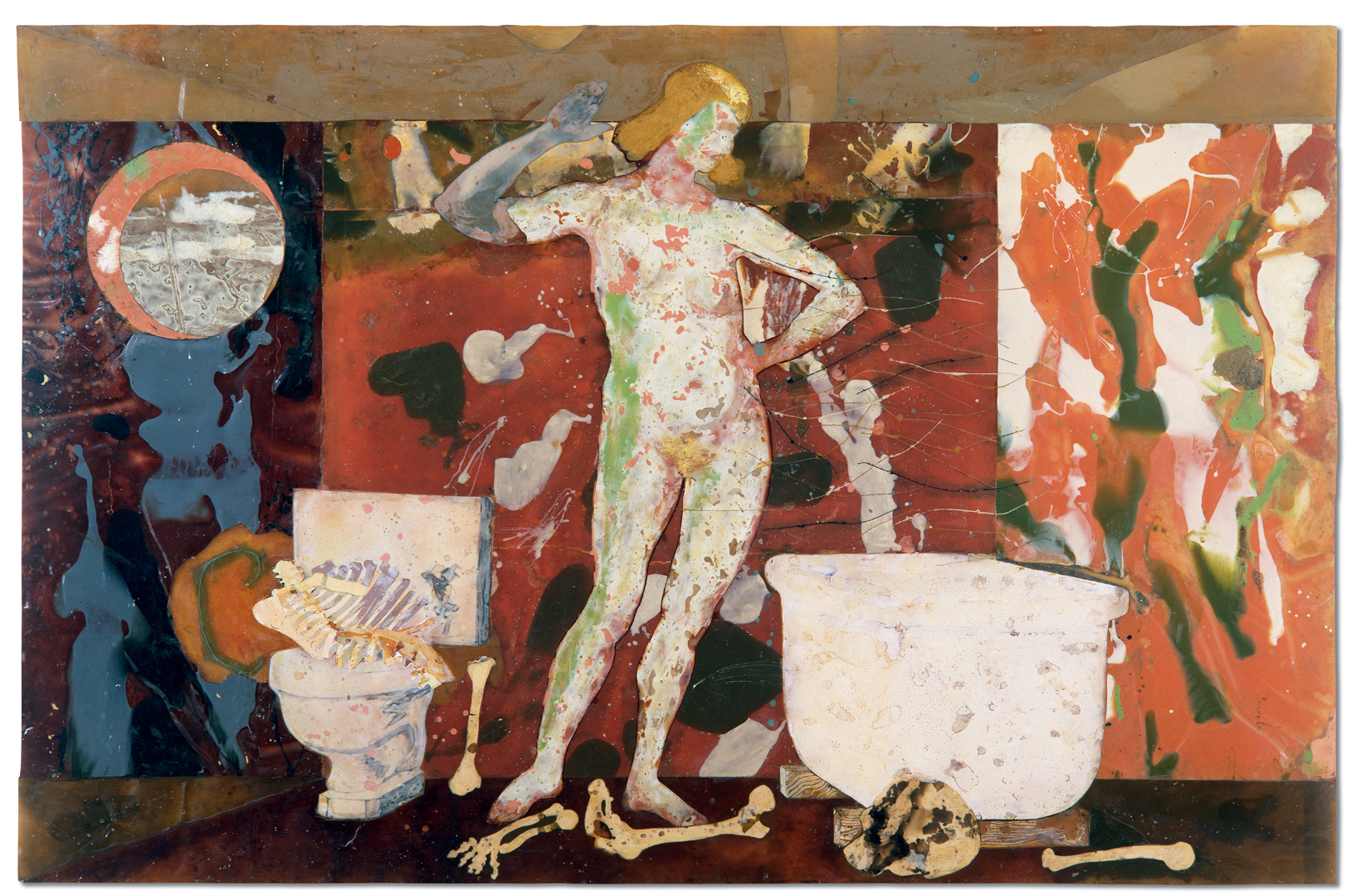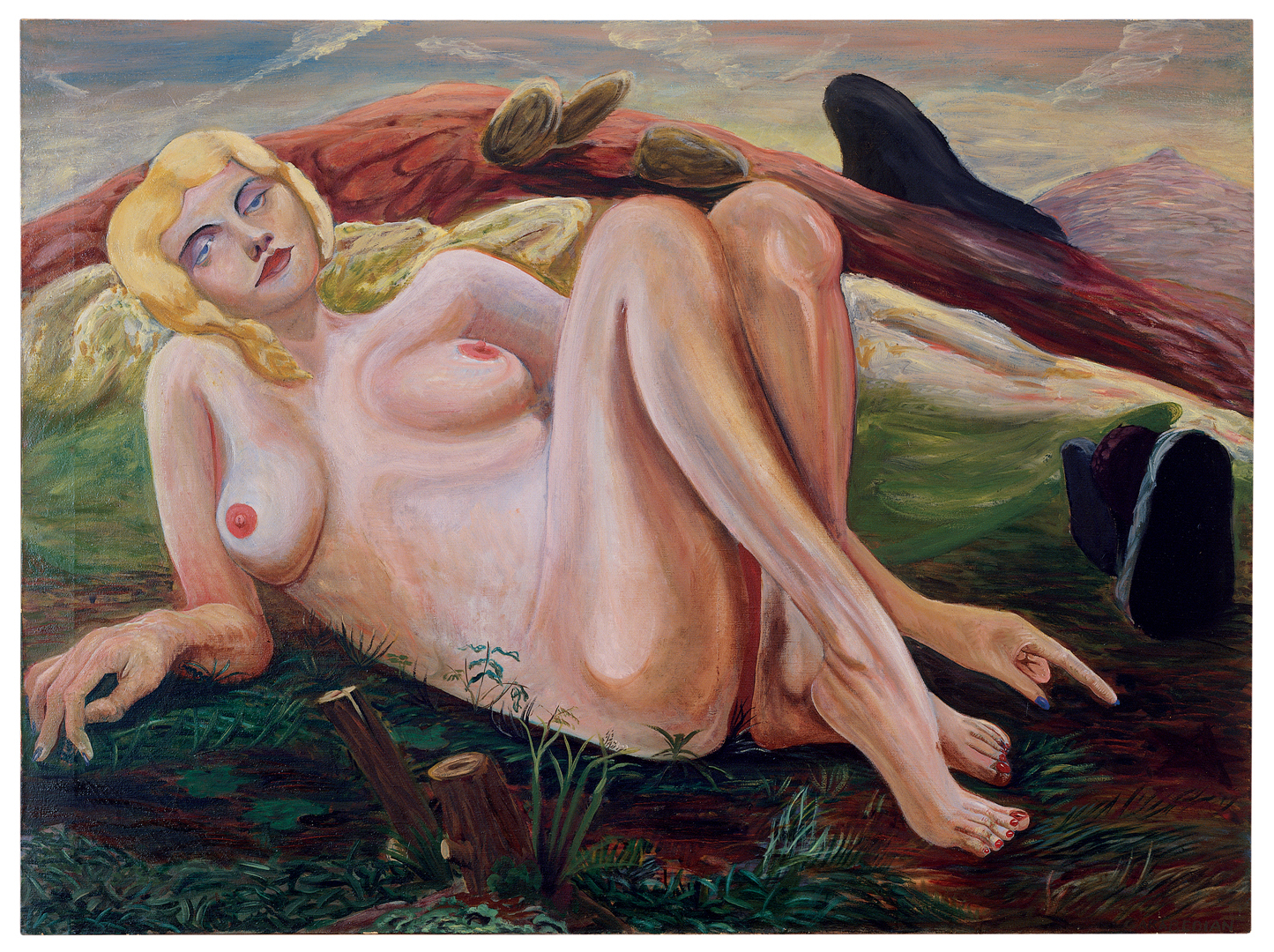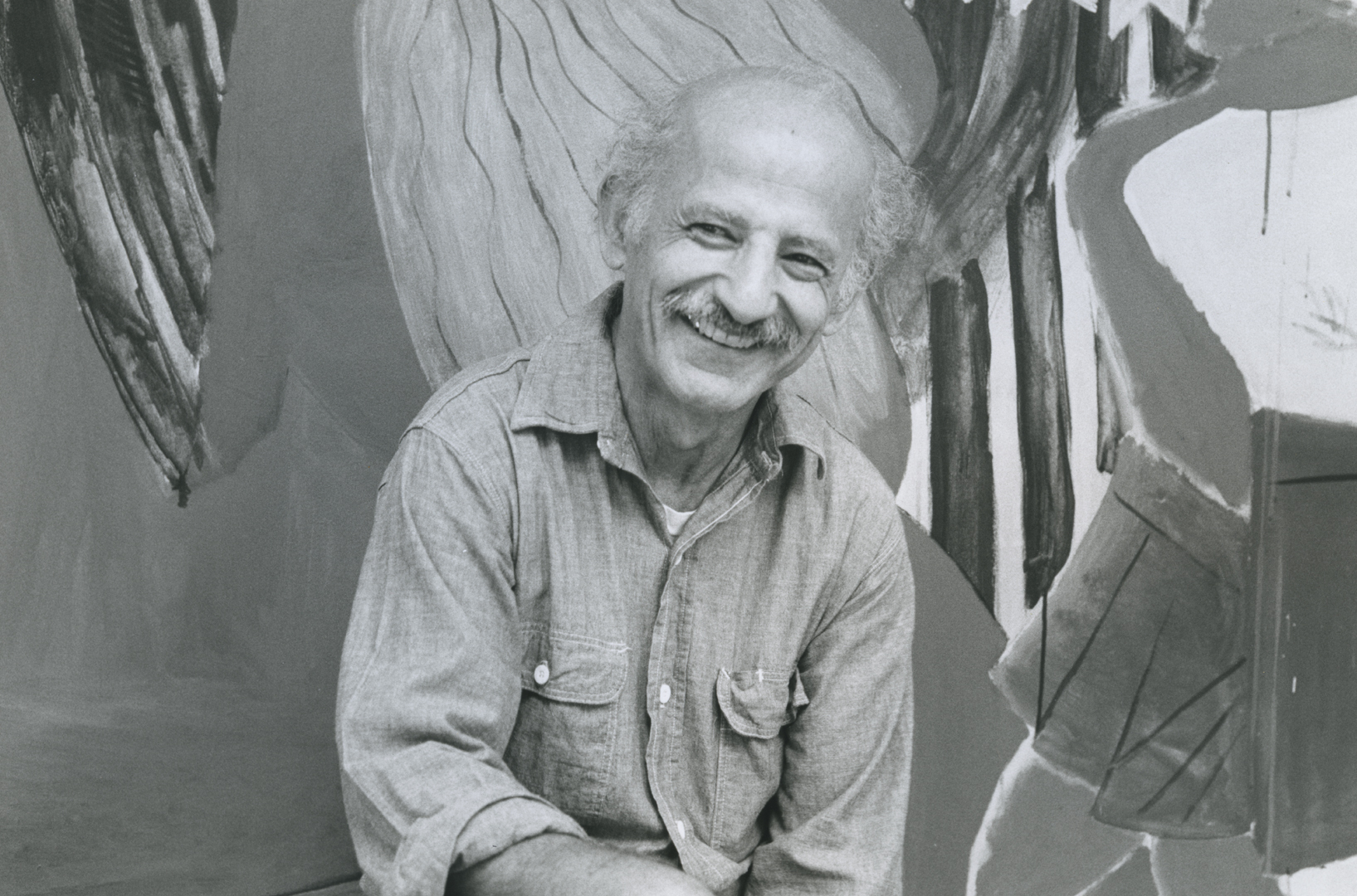
Two iconic works by Charles Garabedian are included in L.A. Louver Celebrates 50 Years. Garabedian’s ambiguous, dream-like Woman in the Bathroom (1973) coalesces many concerns that are central to the artist’s oeuvre: namely, abstract figuration, architectural framing, references to Greco-Roman sculpture, fragmented human forms, and an intermingling of the epic and the intimate. One of a series of resin works from this era produced in tableau-like format, the work shows a marble-white female figure in an easy Classical contrapposto, posed powerfully, even slightly violently, over a scattering of human bones and bathroom fixtures. Behind her, an ambiguous, possibly maritime, landscape peaks through a circular portal, a reference to Chinese architecture also present in Garabedian’s contemporaneous Henry Inn series. Rendered in resin, a common material among the artist’s Light and Space and Minimalist peers, the intimate scene exudes a dark sensuous tactility, the figure commanding the respect Garabedian often confers upon his female subjects. The work marks a critical inflection point in the artist’s career, a moment beyond the descriptive, detailed figurative works of his early career—inspired by classically trained tutors like William Brice—past the architectural works of 1960s and 1970s, and toward the less fixed and more abstract iconic figures of his work of the late 1970s and beyond.

Created just after Garabedian completed his graduate degree in painting from UCLA, the languorously seductive oil painting Jean Harlow (1964) shows the artist turning from—though not completely abandoning—the scenic figurative narratives of his early classical training and moving toward a more abstract, allegorical form of figuration. Here we see the Golden Age actress as a serpentine reclining nude, elongated limbs curled in awkward grace within the frame of the painting. A dreamy landscape swirls around her, attenuated brushstrokes reflecting sinuous curves, twilight colors mirroring tones of skin, hair and eyes. Though its subject is a real person—an icon of Garabedian’s adopted hometown of Los Angeles—the work nevertheless feels mythical. Here, as in many of the artist’s works, particularly those from the 1970s onward, the landscape appears to arise from the figure, who reposes timelessly in an indifferent state of goddess-like dominion. At once erotic, carnal, and slightly ungainly, but also sovereign and transcendent, Garabedian’s figure is an exemplar of what the artist continually strove to represent—namely, something “primal, archetypal, and monumental.”

Charles Garabedian came to painting at age 32 and was almost 40 before he had his first solo exhibition. His career as an artist followed his service as a staff sergeant and gunner during World War II, and positions working for the tire company B.F. Goodrich, assembling cars for Chrysler, and clerking for the railroad. Garabedian studied literature and history at USC, and encouraged by his friend Ed Moses, he took art classes with Howard Warshaw, which led him to UCLA. Upon graduating with an MA in 1961, he stayed on to teach at the university. He also taught at the College of Creative Studies at UC Santa Barbara, and other established art institutions throughout the 1960s, ’70s, and ’80s. In 1978, Marcia Tucker, former Senior Curator at the Whitney Museum of American Art, included Garabedian’s work in the exhibition, “Bad” Painting at the New Museum in New York, which she had founded just a year prior. Numerous solo and group gallery and museum shows followed, culminating in a survey exhibition curated by Julie Joyce at the Santa Barbara Museum of Art in 2011, which drew widespread critical acclaim.
In 1979, Garabedian joined L.A. Louver. Over 36 years of representing Garabedian, L.A. Louver mounted 17 solo exhibitions, including his last, Sacrifice for the Fleet in October-November 2015, which featured 18 works that Garabedian created over the last two years of his life. L.A. Louver's last interview with Garabedian in his studio can be found online here.
We invite you to experience Charles Garabedian’s Jean Harlow and Woman in the Bathroom in L.A. Louver Celebrates 50 Years, on view through 14 June.

